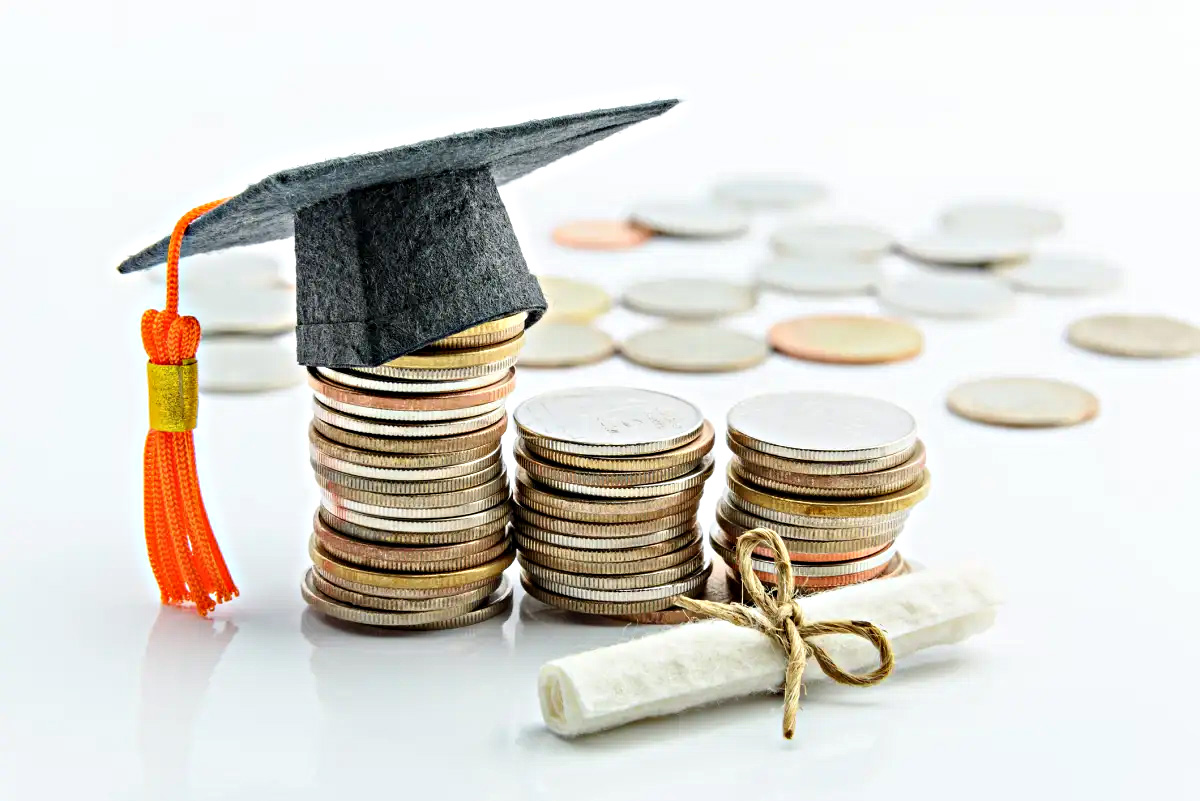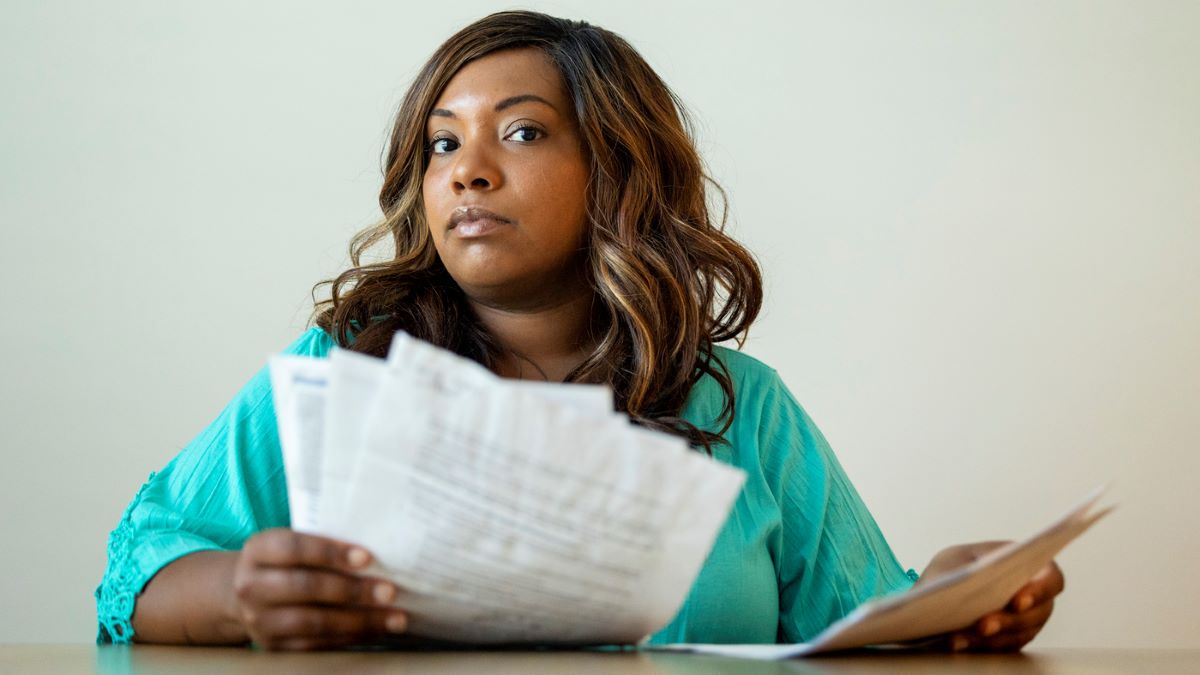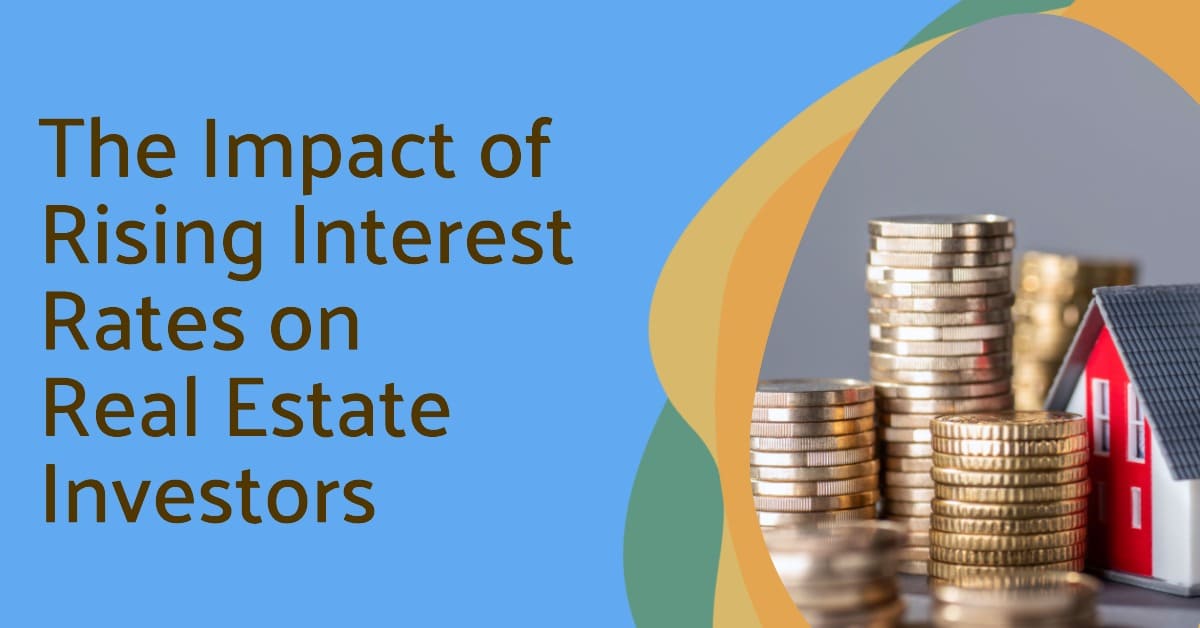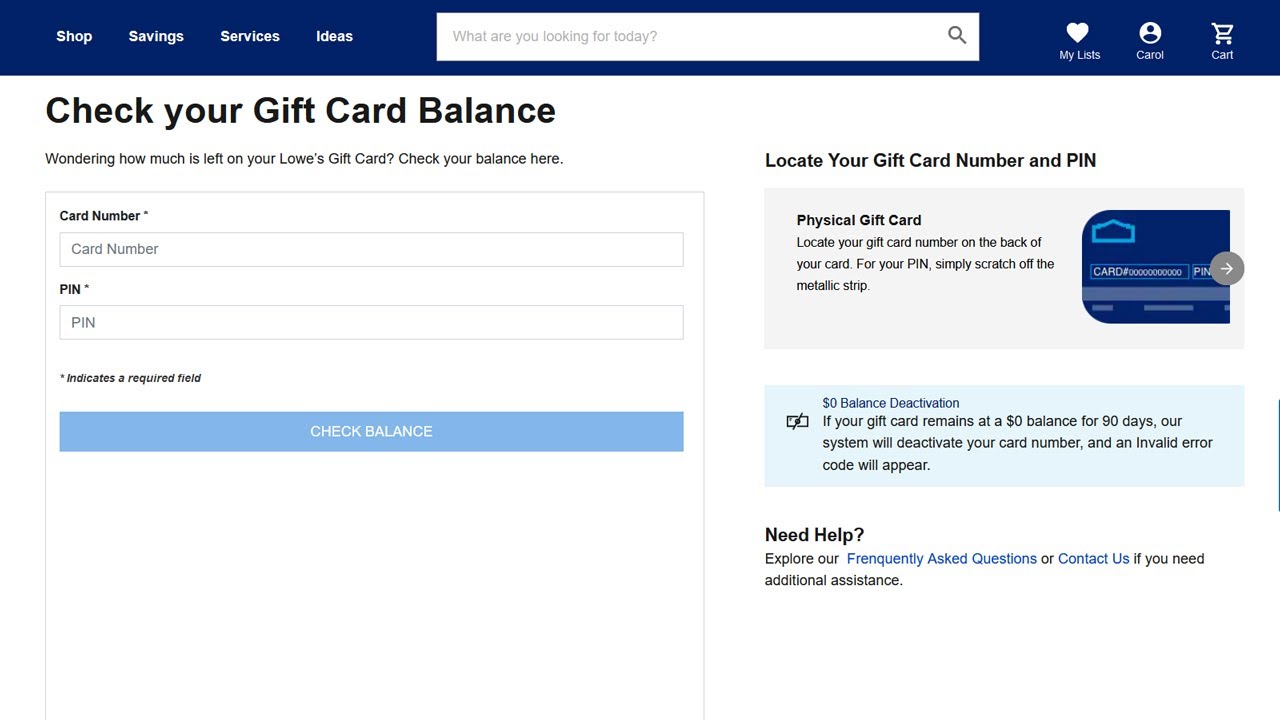

Finance
What Happens After Student Loan Rehabilitation
Published: November 3, 2023
Discover what happens after student loan rehabilitation and how it affects your finances. Gain insights on the financial implications and options available to manage your loans.
(Many of the links in this article redirect to a specific reviewed product. Your purchase of these products through affiliate links helps to generate commission for LiveWell, at no extra cost. Learn more)
Table of Contents
- Introduction
- What is student loan rehabilitation?
- Eligibility for student loan rehabilitation
- Benefits of student loan rehabilitation
- How does student loan rehabilitation work?
- Steps to complete student loan rehabilitation
- After student loan rehabilitation
- Impact on credit score
- Potential consequences of defaulting again
- Conclusion
Introduction
Welcome to the world of student loans, where millions of aspiring individuals embark on their educational journeys with the help of financial aid. While these loans undoubtedly open doors to higher education, they often come with the burden of repayment. For some borrowers, keeping up with monthly payments can be a challenge, leading to delinquency or even default.
However, there is still hope for those who find themselves in this situation. Student loan rehabilitation offers a pathway towards getting back on track and regaining financial stability. This process involves working with your loan servicer to create a manageable repayment plan, potentially reducing the negative consequences of default.
In this article, we will explore the ins and outs of student loan rehabilitation, including eligibility requirements, the benefits it offers, and what happens after the rehabilitation process is complete. By understanding this process, you can navigate the challenges of student loan repayment more effectively and pave the way towards a brighter financial future.
What is student loan rehabilitation?
Student loan rehabilitation is a program designed to help borrowers who have defaulted on their federal student loans. Default occurs when a borrower fails to make payments for an extended period, usually 270 days or more. When a loan goes into default, it can have severe consequences such as wage garnishment, tax refund seizure, and a significant negative impact on credit scores.
Student loan rehabilitation provides borrowers with an opportunity to repair their credit history and bring their loans back into good standing. The program allows borrowers to make a set number of monthly payments based on their income and family size. Typically, these payments are lower and more affordable compared to the standard repayment amount.
Once a borrower successfully completes the rehabilitation program, the default status is removed from their credit report, and they regain eligibility for various benefits, such as deferment, forbearance, and income-driven repayment plans. This process also stops collections activity and prevents further legal actions against the borrower.
It’s important to note that student loan rehabilitation is only available for federal loans, which include Direct Loans, Federal Family Education Loans (FFEL), and Perkins Loans. Private student loans do not qualify for rehabilitation.
Eligibility for student loan rehabilitation
To be eligible for student loan rehabilitation, there are certain requirements that borrowers must meet:
- Federal student loans: Only federal student loans are eligible for rehabilitation. Private student loans are not eligible.
- Defaulted status: Borrowers must be in default on their federal student loans to qualify for rehabilitation. This means they have missed payments for at least 270 days.
- Loan servicer: The loan must be held by a federal loan servicer or a guaranty agency. Borrowers can find out who their loan servicer is by logging into the National Student Loan Data System (NSLDS) or by contacting the Federal Student Aid Information Center.
- Affordability: Borrowers must demonstrate a willingness and ability to make the rehabilitation payments. These payments are typically based on a percentage of the borrower’s discretionary income and family size.
- Commitment: To successfully complete the rehabilitation program, borrowers must make nine consecutive, on-time monthly payments within a period of ten months. These payments must be voluntary and made under an agreed-upon rehabilitation agreement with the loan servicer.
It’s important to note that eligibility criteria may vary depending on the specific loan program and servicer. It’s always recommended to contact the loan servicer or a student loan professional for personalized guidance on eligibility requirements and the rehabilitation process.
Benefits of student loan rehabilitation
Student loan rehabilitation offers several benefits to borrowers who have defaulted on their federal student loans. These benefits can provide much-needed relief and help individuals regain control of their finances. Here are some key advantages of student loan rehabilitation:
- Improved credit score: One of the significant benefits of successfully completing the rehabilitation program is the positive impact it has on your credit score. Once you complete the program, the default status is removed from your credit report, and your credit score begins to recover. This can open up doors to better credit opportunities in the future, such as lower interest rates on loans and credit cards.
- Financial stability: By rehabilitating your student loans, you create a structured path towards repayment. The program offers affordable monthly payments, based on your income and family size, which allows you to manage your finances more effectively. This increased stability can alleviate the stress and uncertainty surrounding your loan repayment.
- Restored federal loan benefits: Defaulted borrowers typically lose access to federal loan benefits, such as deferment, forbearance, and income-driven repayment plans. However, completing the rehabilitation program restores these benefits, providing borrowers with additional flexibility and options to manage their loans in the future.
- Legal protections: Defaulting on federal student loans can lead to legal actions, such as wage garnishment and tax refund seizure. Student loan rehabilitation stops these collection activities and prevents further legal actions against the borrower. This can provide peace of mind and protect your financial well-being.
- Clean slate: Successfully completing the rehabilitation program allows borrowers to start fresh with their federal student loans. It ensures that they are no longer in default and are considered in good standing. This clean slate can pave the way for future financial opportunities and a more positive outlook on your overall financial situation.
Rehabilitating your student loans not only offers immediate benefits but also sets you on a trajectory towards better financial health in the long run. It’s essential to take advantage of these benefits and work towards sustainable loan repayment.
How does student loan rehabilitation work?
Student loan rehabilitation is a process that allows borrowers to bring their defaulted federal student loans back into good standing. Here’s a breakdown of how the rehabilitation process typically works:
- Contact your loan servicer: To initiate the rehabilitation process, you need to contact your loan servicer. They will provide guidance on the specific steps you need to take and the documentation required.
- Establish affordable payments: Your loan servicer will work with you to determine an affordable monthly payment amount. This payment is usually based on a percentage of your discretionary income and family size, following the guidelines of the loan rehabilitation program.
- Payment agreement: Once the affordable payment amount is determined, you will enter into a rehabilitation agreement with your loan servicer. This agreement outlines the terms and conditions of the rehabilitation program, including the number of payments required and the payment due dates.
- Make on-time payments: To successfully complete the rehabilitation program, you must make nine consecutive monthly payments on time. These payments must be voluntary, made under the agreed-upon rehabilitation agreement, and completed within a period of ten months.
- Financial evaluation: During the rehabilitation process, your loan servicer may evaluate your financial situation periodically. This evaluation helps determine if the current payment amount is still affordable based on any changes in your income or family size.
- Loan transfer: Upon completion of the rehabilitation program, your loan will be transferred to a new loan servicer. It’s important to stay informed about the transition and ensure that you receive all the necessary information regarding your new loan servicer and repayment terms.
It’s crucial to fulfill your obligations throughout the rehabilitation process to successfully complete the program. Missing a payment or not meeting the requirements of the rehabilitation agreement can have negative consequences and may prolong your journey to loan recovery.
Additionally, it’s recommended that you fully understand the terms and conditions of your rehabilitation program before committing to it. If you have any questions or concerns, don’t hesitate to reach out to your loan servicer or seek assistance from a student loan professional.
Steps to complete student loan rehabilitation
If you find yourself in default on your federal student loans, student loan rehabilitation offers a way to get back on track. Completing the rehabilitation process is a crucial step towards restoring your financial well-being. Here are the steps to follow:
- Contact your loan servicer: Reach out to your loan servicer to express your intent to rehabilitate your student loans. They will provide you with the necessary information and guide you through the process.
- Gather required documentation: Your loan servicer may request specific documents to verify your financial information, such as income verification, family size, and monthly expenses. Be prepared to provide these documents promptly.
- Discuss affordable payment options: Work with your loan servicer to determine an affordable payment amount based on your income and family size. This payment should be manageable for you without causing financial strain.
- Enter into a rehabilitation agreement: Once the affordable payment amount is determined, you will need to sign a rehabilitation agreement. This document outlines the terms and conditions of the rehabilitation program, including the number and frequency of payments.
- Make nine consecutive on-time payments: The key requirement of the student loan rehabilitation process is to make nine consecutive monthly payments on time. These payments must be voluntary and made under the terms of the rehabilitation agreement. It’s crucial to set reminders and ensure you make each payment on schedule.
- Stay in communication with your loan servicer: It’s important to maintain open lines of communication with your loan servicer throughout the rehabilitation process. If you encounter any financial difficulties or changes in circumstances, notify your loan servicer immediately to explore available options.
- Loan transfer: After successfully completing the rehabilitation program, your loan will be transferred to a new loan servicer. It’s essential to stay informed about this transition and make note of your new loan servicer’s contact information.
By following these steps and meeting the requirements of the rehabilitation program, you can regain control of your student loans and pave the way towards a more stable financial future.
Remember, it’s crucial to stay committed to the rehabilitation process and make timely payments. Completion of the program will not only bring your loans out of default but also restore your eligibility for various federal loan benefits and provide a positive boost to your credit score.
After student loan rehabilitation
Completing the student loan rehabilitation program is a significant milestone in your journey towards financial stability. After successfully rehabilitating your federal student loans, several important things happen:
- Default status removed: The most immediate benefit is that the default status is removed from your credit report. This means that future lenders and creditors will no longer see the default notation, giving you a fresh start on your credit history.
- Restored federal loan benefits: Completing the rehabilitation program restores your eligibility for various federal loan benefits. You can once again access options such as deferment, forbearance, and income-driven repayment plans. These benefits can provide flexibility and assistance in managing your student loan payments.
- Positive impact on credit score: Rehabilitating your student loans can have a positive effect on your credit score. While defaulting on loans can severely impact your credit, successful rehabilitation shows a commitment to repayment and can help rebuild your creditworthiness over time.
- Improved loan terms: Defaulted loans often come with additional fees, collection costs, and higher interest rates. Through rehabilitation, these additional charges can be eliminated, and your loan terms may be adjusted to more favorable terms, making your repayment journey more manageable.
- Ability to apply for new credit: Once your loans are out of default, you regain the ability to apply for new credit. However, it’s important to be cautious and use credit responsibly, as your credit history and score are still factors that lenders consider when assessing your creditworthiness.
- Continued responsibility for repayment: After completing student loan rehabilitation, it’s important to remain diligent and continue making your monthly payments as agreed. By staying on top of your payments, you can continue to improve your financial standing and avoid falling back into default.
Remember, successful rehabilitation is just the first step on your path to financial recovery. It’s essential to maintain responsible money management and make your loan payments a priority. By doing so, you can continue to build a solid financial foundation and achieve your long-term financial goals.
Impact on credit score
Defaulting on student loans can have a significant negative impact on your credit score. However, completing the student loan rehabilitation program can help improve your creditworthiness over time. Here’s how student loan rehabilitation affects your credit score:
1. Removal of default notation: When you successfully complete the rehabilitation program, the default status on your credit report is removed. This is a crucial step in rebuilding your credit and demonstrating to future lenders that you have taken steps to resolve your past financial issues.
2. Positive payment history: Rehabilitation requires making nine consecutive, on-time monthly payments. This positive payment history can significantly improve your credit score over time. Each timely payment demonstrates your commitment to repaying your debts and shows responsible financial behavior.
3. Reduction in negative impact: While the default status and missed payments will still remain on your credit report, completing the rehabilitation program shows that you have taken the necessary steps to resolve the default. This can mitigate the negative impact of the default on your credit score, although it may take time for your score to fully recover.
4. Building a new credit history: After completing rehabilitation, you have the opportunity to build a positive credit history by consistently making on-time payments. This can help improve your credit score further and demonstrate your financial responsibility to future creditors.
It’s important to note that the exact impact on your credit score may vary depending on your individual credit history and the scoring model used by creditors. It’s essential to monitor your credit report regularly to ensure its accuracy and address any discrepancies promptly.
While student loan rehabilitation can improve your credit score, it’s important to remember that it may take time to fully recover. It’s crucial to continue practicing responsible financial habits, such as making all loan payments on time and keeping credit card balances low, to maintain and further improve your creditworthiness.
Potential consequences of defaulting again
Defaulting on student loans once is challenging enough, but defaulting again can have severe and long-lasting consequences. It’s essential to understand the potential ramifications of default to avoid falling back into this situation. Here are some possible consequences:
- Increased debt burden: Defaulting on your student loans again will result in additional interest, late fees, and collection costs. This can significantly increase the total amount you owe and make it even more challenging to repay your loans.
- Wage garnishment: If you default on federal student loans, the government has the authority to garnish your wages through a process called Administrative Wage Garnishment. This means a portion of your paycheck will be withheld to repay the debt, reducing your take-home pay.
- Tax refund seizure: Defaulted borrowers may have their federal and state tax refunds seized to repay outstanding student loan debt. This can create financial hardship and further disrupt your financial stability.
- Negative credit impact: Defaulting again will have a severe negative impact on your credit score. It can significantly decrease your credit rating, making it challenging to secure new credit, such as loans or credit cards, in the future.
- Loss of federal loan benefits: Defaulting on federal student loans again will result in the loss of federal loan benefits, including deferment, forbearance, and income-driven repayment plans. These benefits provide important repayment flexibility and options to borrowers.
- Legal actions: Continued default can lead to legal actions, including lawsuits and judgments filed against you. This can result in further financial complications, additional costs, and potential wage garnishment.
- Difficulty obtaining financial aid: Defaulting on student loans can affect your eligibility for future financial aid. If you plan to return to school or pursue higher education, default can limit your access to federal grants, scholarships, and even private student loans.
It’s crucial to take proactive steps to avoid defaulting again. If you are experiencing difficulty making your payments, reach out to your loan servicer immediately. They can guide you through options such as income-driven repayment plans, deferment, or forbearance to help you avoid default and find a more manageable repayment solution.
Remember, defaulting again only exacerbates your financial challenges. It’s important to explore all available avenues to stay on track with your student loan payments and maintain your financial well-being.
Conclusion
Defaulting on student loans can be a daunting and overwhelming experience, but student loan rehabilitation offers a lifeline to borrowers seeking to regain control of their finances. By completing the rehabilitation program, borrowers can restore their loans to good standing, repair their credit history, and access important federal loan benefits.
Throughout the rehabilitation process, it’s crucial to stay committed to making on-time payments and maintaining open communication with your loan servicer. By doing so, you can successfully complete the program and set yourself on a path towards financial stability.
However, it’s important to remember that rehabilitation is just the first step. It’s essential to continue managing your student loan payments responsibly and practicing good financial habits to maintain your progress. This includes making timely payments, monitoring your credit report, and seeking assistance when needed.
If you find yourself struggling with student loan payments, don’t hesitate to reach out to your loan servicer or a student loan professional for guidance. They can provide valuable insights and help you explore options to make repayment more manageable.
By taking proactive steps, demonstrating financial responsibility, and staying engaged in the repayment process, you can not only overcome default but also build a solid foundation for your financial future. Remember, the journey towards financial recovery takes time, but with determination and perseverance, you can regain control of your student loans and pave the way towards a brighter financial outlook.














